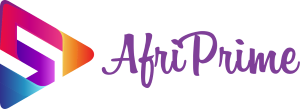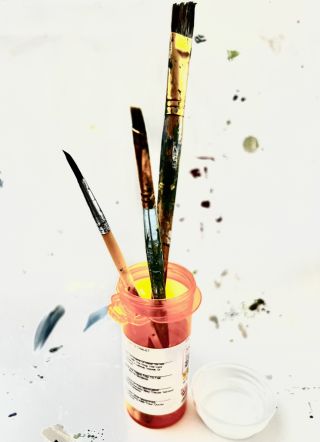What if Your Doctor Actually Talked With You? In an insurance-driven market, patients and practitioners seldom truly interact. Reviewed by Jessica Schrader

KEY POINTS-
- Storytelling—and active listening—provide a critical boost to the doctor-patient relationship.
- Medical pros who write, paint, dance, and focus on humanity can use this creativity to understand patients.
- Letting patients talk about their lives can create a system that works for them and for their doctors.

When her doctor retired, Sarah asked friends for recommendations for a new general practitioner. The doc she chose did the usual first-patient interview and balked when Sarah talked about her alcohol intake: a beer with dinner and Scotch at bedtime. Too much, the doc said; you need to cut one out. Sarah’s first thought was that the doc needed to go, not the alcohol. At 75, with a solid professional career still in full flower and a level of activity that puts to shame those 20 years younger, she felt she knew she could handle her two-drink tradition.
But Sarah liked the doctor overall and stuck with her. Eventually, as the two learned more about one another, the new doc relented and acknowledged that, given all the other variables she learned about, Sarah’s alcohol use was not a problem. Also, Sarah was not going to change, so she might as well work with her patient, not against her.
The doc listened, and that created a relationship that served Sarah well and helped the doctor succeed. This interactive approach is way too rare in this country’s medical system, which is defined by frustrated patients and hurried, over-stressed practitioners trying to meet an insurance quota.
Katherine Standefer faced a years-long battle with a rare heart condition that initially defied diagnosis. In her memoir, Lightning Flowers, she writes about the multiple doctors she visited in search of what was eventually diagnosed as long QT syndrome, a hereditary condition that was treated with an implanted cardioverter defibrillator. The implant had its own issues, including shocking Standefer literally off her feet. As she searched for an understanding of her condition and its treatment, she advocated for the use of narrative medicine—that is, a system that would allow her to thoroughly tell her story to her doctor and give that doctor time and permission to listen.
Narrative medicine sounds intuitive, but it’s counter to today’s fast-moving health care model. It's nothing new, but its need might be especially acute now because of trauma related to COVID-19.
Several universitie (Columbia, Temple, University of Arizona) offer degrees in it, others offer certification, some have continuing workshops. Such programs connect medical practitioners with the arts and sciences, encouraging storytelling and active listening. The goal of the programs is to improve medicine by engaging the patient and practitioner as humans first. Letting patients talk about how they live their lives can guide treatment regimens, creating a system that works for and with the patient.
Docs Who Dance
Health care professionals also personally need this break for humanity. They are exhausted and disillusioned, and nearly 20% have considered leaving the field. Workloads have increased, time with patients decreased, and complaints have mounted from all directions. To stay the course, many turn to counseling, and some turn to the arts and humanities.
They learn to read closely, to write, to understand social justice issues, and to discuss. Some build their skills in drawing and painting. Others dance. They tap (perhaps literally) into their creative side to improve human-to-human interactions. It’s a deep dive into connecting with themselves and their patients.
The radiologist who guided me through breast cancer treatment decorated her office with her exquisite original watercolors. Each time I visited—every weekday for a month—I took time with a different painting, letting it lull me into calm, forgetting why I was there for a moment. I suspect they calmed her, too. As for a doctor who dances? Sign my dance card, please.
The Healing Power of Storytelling
People with health issues and those who treat them are, it seems, mainly people. They have stories, and within those stories are keys to the cause of and possible solutions to the issues they face.
The Associated Press Style Book, used as a primary guide for journalists, emphasizes this. Patients are not diabetics, for example; they are people with diabetes. Same for professionals: Rather than saying a man is an oncologist, we should identify him as a man who treats people with cancer. That puts the illness into a human context.
Health care professionals who get to know a person first before knowing their disease can more effectively define a path that works specifically for that patient. Such a professional can learn that a woman with dementia has a home full of pottery she has created with her now-gnarled hands, or the man with terminal cancer once biked across the United States, or the child with hearing loss had aspired to be an astronaut and now plans to work behind the scenes for NASA.
Telling their stories can make these patients’ lives more meaningful, and listening to them can help their caregivers understand how to heal their spirits, if not their bodies. In the process, those professionals might learn a bit more about themselves and make their own walk into an unknown future a little easier.
Patient and practitioner can learn together. They might even dance.
- Questions and Answers
- Opinion
- Motivational and Inspiring Story
- Technology
- Live and Let live
- Focus
- Geopolitics
- Military-Arms/Equipment
- Segurança
- Economy
- Beasts of Nations
- Machine Tools-The “Mother Industry”
- Art
- Causes
- Crafts
- Dance
- Drinks
- Film/Movie
- Fitness
- Food
- Jogos
- Gardening
- Health
- Início
- Literature
- Music
- Networking
- Outro
- Party
- Religion
- Shopping
- Sports
- Theater
- Health and Wellness
- News
- Culture

